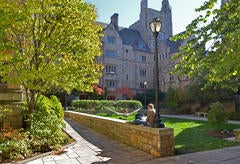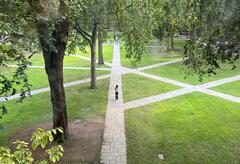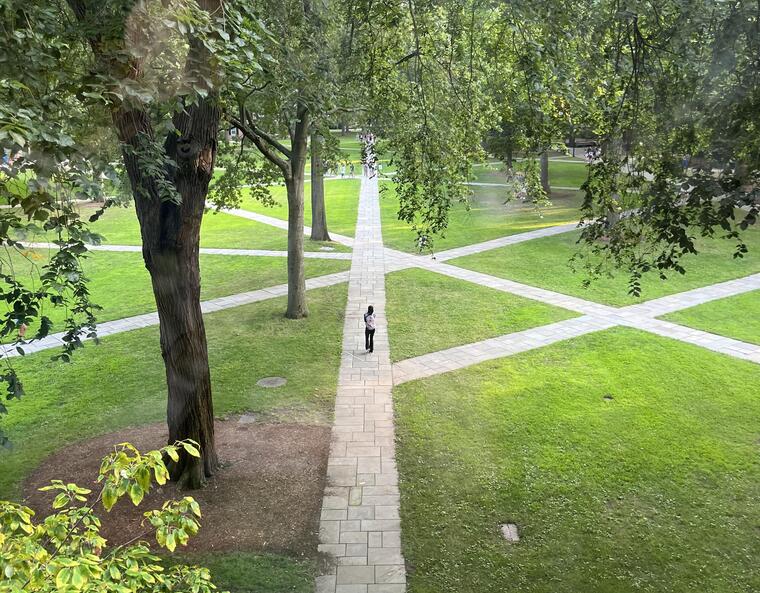
When I was touring colleges, I invariably and subconsciously observed the same characteristic: the number and diversity of study spots.
My ideal campus was a diversified portfolio: give me some benches under trees, some by flowerbeds; show me dark nooks and bright window overlooks; how about a hammock or two?
Yale’s portfolio is as diverse as it gets. You could relax in Sterlin’s Selin Courtyard, grind in Bass Library, head to a residential college library, study in an empty classroom in any of the academic buildings and lecture halls, and repose in one of the many lawns and greens.
Your study atmosphere is critical when it comes to work efficiency, so experimenting with different locations is both a joy and an imperative in your first couple of months on campus. What works? For me: sunlight and no AirPods. What doesn’t work? For me: dorm desk and crowded spaces that enable people-watching. What place could satisfy all of my environmental demands?
The stacks.
The bookstacks, or stacks, are the heart of Sterling Memorial Library and a focal point of Yale’s architectural skyline. At 150 feet and 16 floors tall, the stacks hold Sterling’s more than 2.5 million volumes and form the body of this towering building designed in the Collegiate Gothic style to resemble a European cathedral.

At the end of each aisle of books in the stacks, there is a desk next to one of the 3,300 stained glass windows designed by artist G. Owen Bonawit. It is quiet, a stifling quiet. Each cubicle is insulated from other students. You are truly alone.
It is respite and the only place in which I am capable of finishing voluminous amounts of work. It is the ultimate study spot for me.








